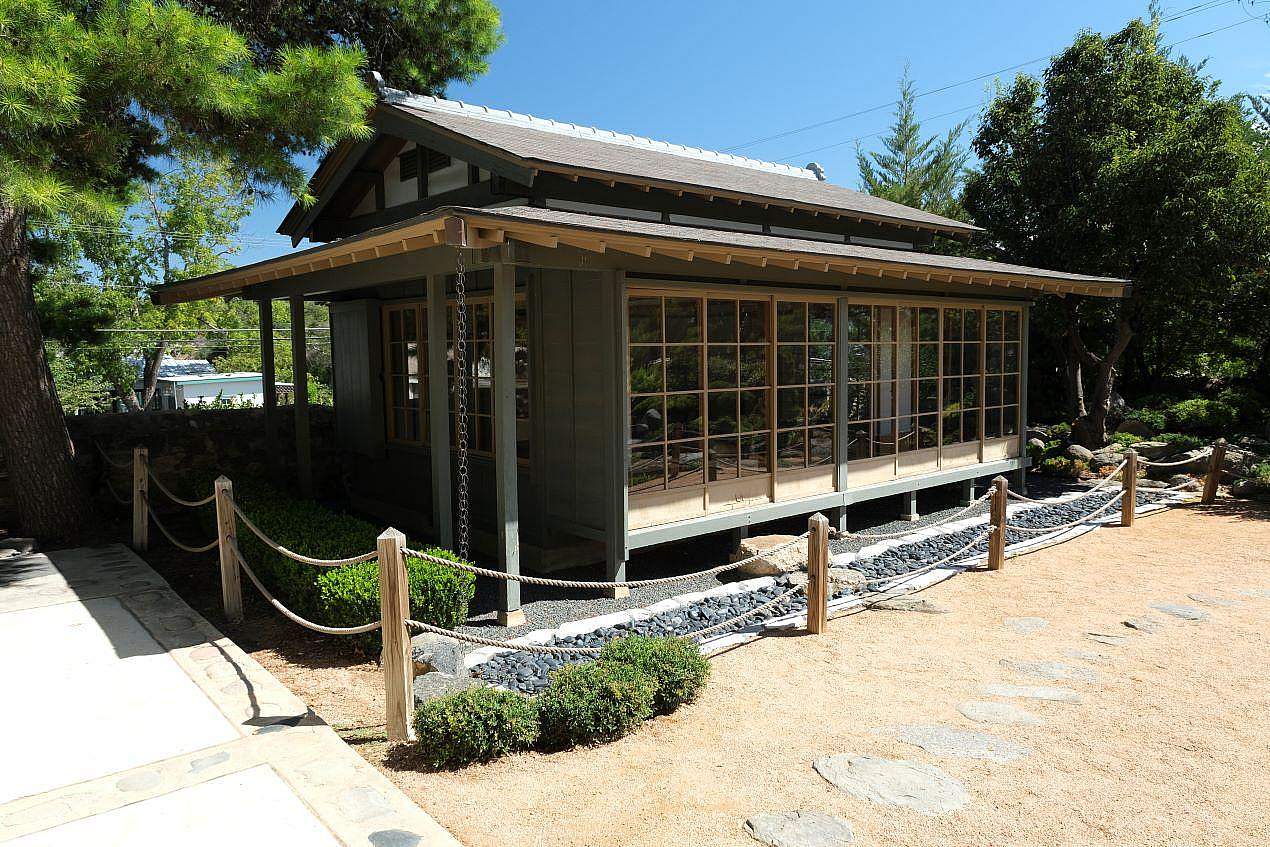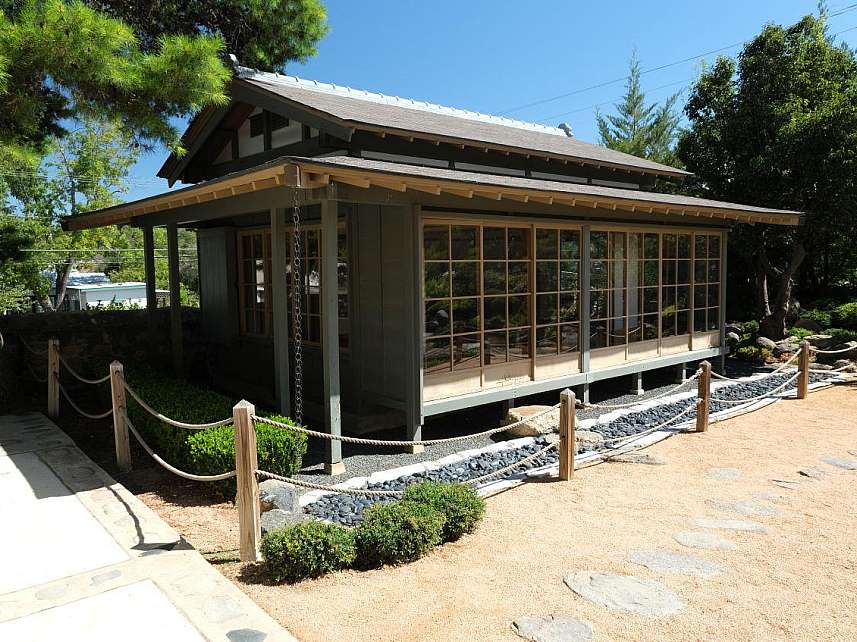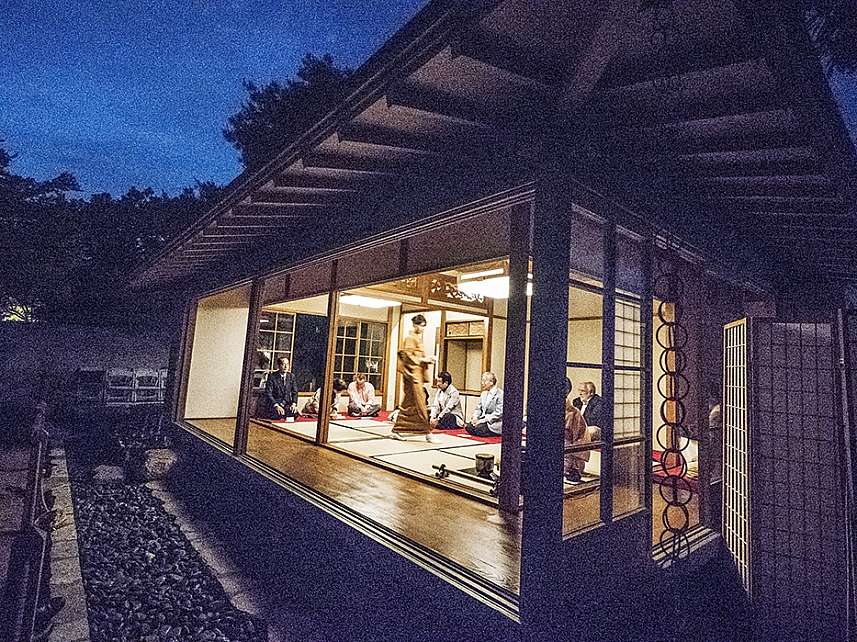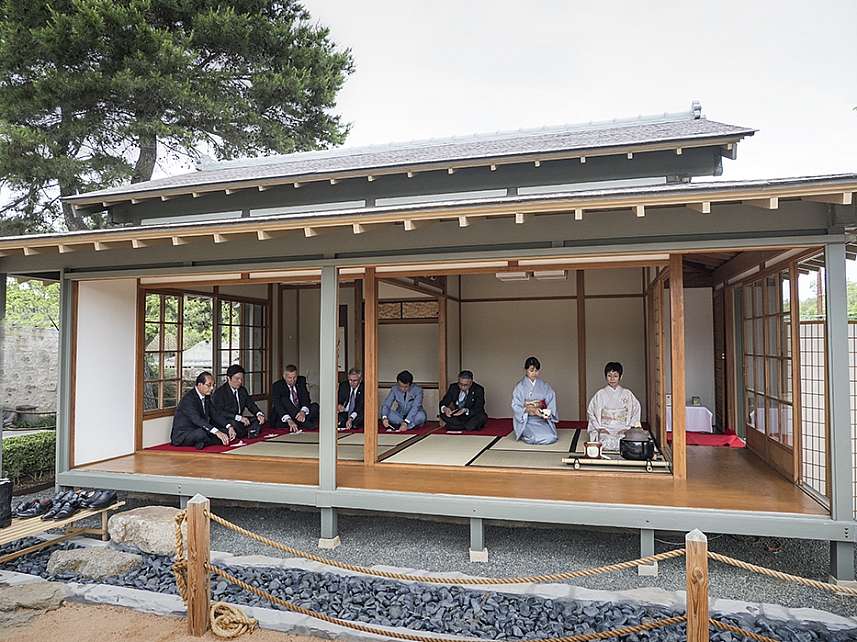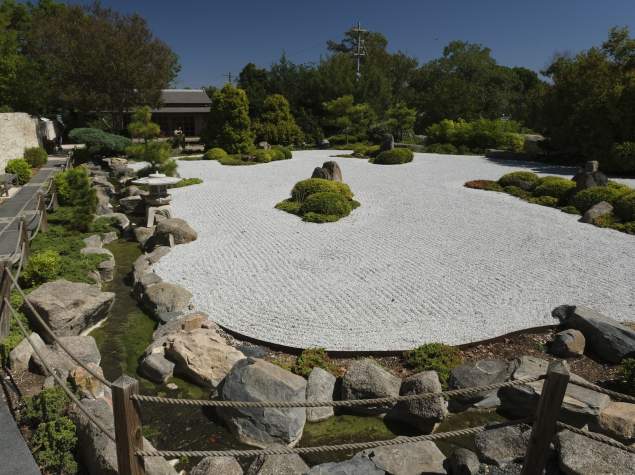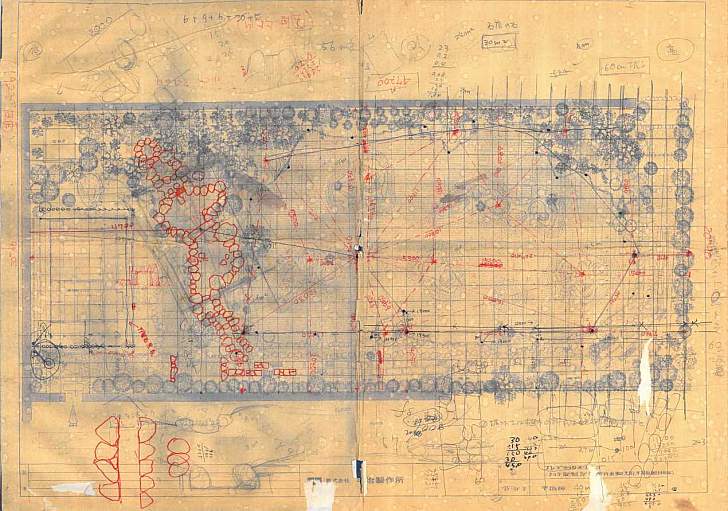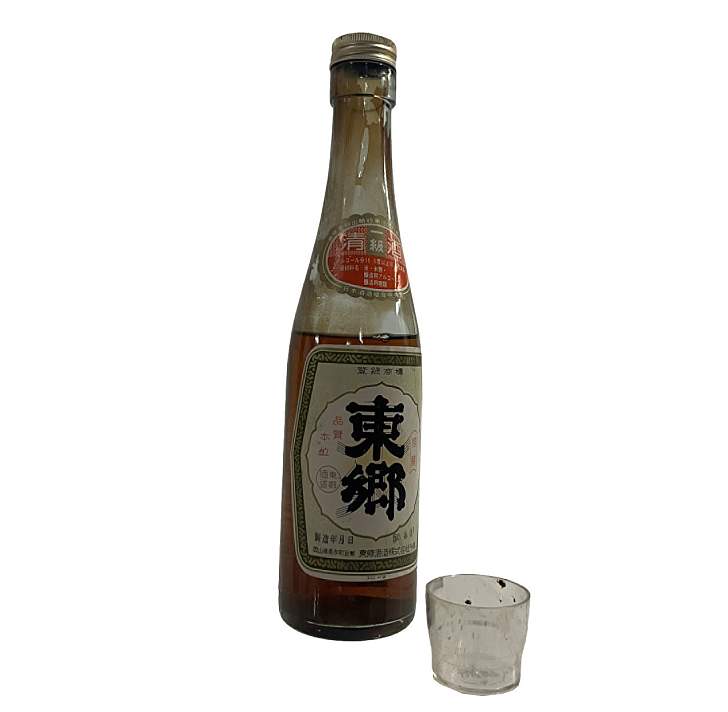A replica of Admiral Heihachiro Togo's personal study. The Togo Study was copied and constructed in Japan with traditional Japanese methods, then deconstructed and shipped to the United States, where it was reassembled for the Japanese Garden of Peace. The officials held a traditional tea ceremony inside the Togo Study during the official opening in 1976, and officials from both Japan and the U.S. were gathered once again to rededicate the Garden on 30 April 2018 after the Garden was renovated.
Togo Study
This section examines a few of the elements of the Garden and their meaning or symbolism.
Bamboo Pool
This small pool, made of a stone basin that catches water flowing from a bamboo pipe, is copied from similar Japanese fixtures that are intended to allow the garden’s visitors to “purify themselves.” The idea is to wash one’s hands, rinse one’s mouth, and cleanse one’s mind to set aside worldly impurities before visitors enter the Garden. This allows them to leave worldly impurities, harsh words, and evil thoughts behind to better meditate in the presence of pure nature.

The stream at the Japanese Garden of Peace
Water Elements
The water elements of the Japanese Garden of Peace are typical of a traditional Japanese garden, with a waterfall, a pond, and a stream that encircles the rest of the garden. The pool is copied from the Togo Shrine in Tokyo, Japan, although the Tokyo pond is shaped into the characters of “ichi no Iki” (meaning “one heart” or “loyalty”). Instead of recreating the distinctive shape with the pond itself, the builders of the Texas counterpart included rocks next to the pond with the characters inscribed. The stream encircling the garden represents life itself, “the raindrop that finds its way to the sea,” a visual representation of the cycle of life.

The rock garden at the Japanese Garden of Peace
Rock Garden
The rock garden in the middle of the Japanese Garden of Peace represents the Pacific Ocean, with large rock islands representing the Pacific Islands surrounded by a sea of white granite stones, which are raked to symbolize the ocean waves. Although the original design called for granite stones, the material was unavailable in the United States during construction, and the builders used white limestone. Rain and general weathering quickly turned these to brown caliche mud, so they were replaced with decomposed pink granite. A restoration of the Garden in 2016 brought back the original idea of white granite, and 30 tons of tiny white pebbles were used to revive the rock garden.

